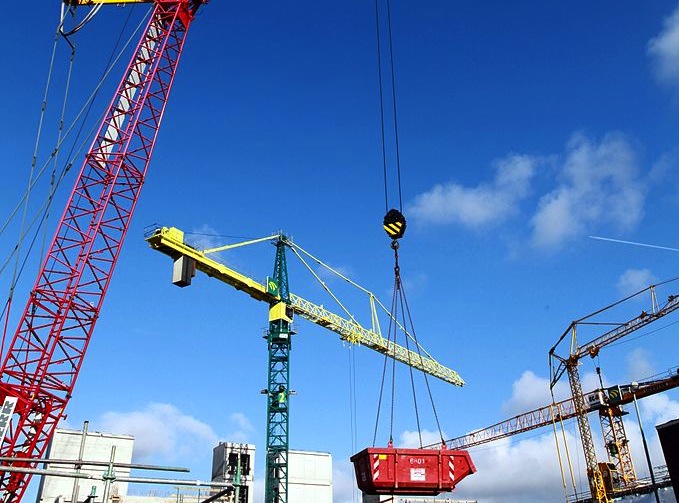Uncertainty about government spending clouds an otherwise positive economic outlook among 59 middle market construction firms polled recently by GE Capital.
Those firms—which average 652 employees and $144.6 million in annual revenue—are particularly confident about U.S. and local markets, though less so about the global arena. Only 12% of those polled said they were “extremely confident” about the condition of global economies, versus 21% who felt the same way about the U.S. economy, and 42% who liked what they were seeing about their local economies.
The firms’ confidence reflects their financial performance. Seven of 10 respondents reported improvements in their companies’ financials as of September 2014, versus fewer than three in five polled last March.
However, while half of the construction firms surveyed said they were hiring more people, the number was slightly down from the 57% who were hiring last March. The good news is that nearly half of the firms polled—47%—expect the construction industry to expand through September 2015, during which construction-related employment is expected to increase by 5.4%.
The survey’s respondents see the energy sector as holding out the greatest potential for future construction projects and hiring. Office and residential projects are also expected to be stronger. But a lot of these firms’ optimism seems contingent on public works spending, which “continues to have an immense impact on the industry and is a key consideration in expenditure decisions,” according to GE Capital.
Another factor that is likely to impact construction firms’ profitability is the direction that healthcare costs take. One-third of respondents are anticipating an increasing cost structure. Still, the respondents expect their margins to grow by average of 3.7% over the next year, which greatly exceeds the 0.2% growth that respondents were projecting last March.
GE Capital produces its quarterly surveys in cooperation with the National Center for the Middle Market, a multiyear partnership between GE Capital and Ohio State University’s Fisher College of Business. For more information about construction and other industries, visit gecapital.com/cxosurvey.
Related Stories
| Mar 4, 2014
How EIFS came to America
Design experts from Hoffmann Architects offer a brief history of exterior insulation and finish systems in the U.S.
| Mar 4, 2014
If there’s no ‘STEM crisis,’ why build more STEM schools?
Before you get your shorts in a knot, I have nothing against science, technology, engineering, or even mathematics; to the contrary, I love all four “STEM” disciplines (I’m lying about the math). But I question whether we need to be building K-12 schools that overly emphasize or are totally devoted to STEM.
| Mar 3, 2014
Negotiate your way to success
There are few business skills as important as negotiation. Many successful businesspeople pride themselves on their ability to turn a deal in their favor. Here are a few key negotiation principles to ensure you’re generally getting a good deal.
| Mar 3, 2014
5 ways to gain clients you actually like
Gaining more clients is one thing. Gaining more clients that you actually like is something else entirely. Here are some tips to perfect the art of attracting and retaining clients that you enjoy working with.
| Mar 3, 2014
Engineering and construction CEOs are cautiously optimistic about the global economy, says PwC
Firm leaders remain leery about the availability of skilled workers, the state of government debt and deficits, and rising material prices, according to PwC’s 2014 Global CEO Survey.
| Mar 1, 2014
Dramatic fractal roof highlights SOM's new Mumbai airport terminal [slideshow]
The terminal merges new technology and traditional regional architecture, notably in the fractal roof canopy that runs throughout the terminal.
| Feb 28, 2014
Six finalists selected in design competition for Canadian Holocaust monument
David Adjaye and Daniel Libeskind are among the finalists for the National Holocaust Monument, planned near the Canadian War Museum in Ottawa.
| Feb 27, 2014
Gensler reveals 44 design trends for the next decade
The 82-page report covers dozens of emerging trends in healthcare, commercial office, hospitality, tall buildings, and more.
| Feb 27, 2014
Target converts former prison dump into latest big-box store
Target's new San Rafael, Calif., location was built on the site of the former San Quentin prison dump.
| Feb 27, 2014
Open or private offices? It depends on the business plan
Open layouts are grabbing headlines as a hallmark of the new workplace—think the Google campus or Facebook's headquarters. And for smaller-scale operations, open designs are often lauded for being less expensive than private office plans. But does that mean all offices should have an open layout?


















